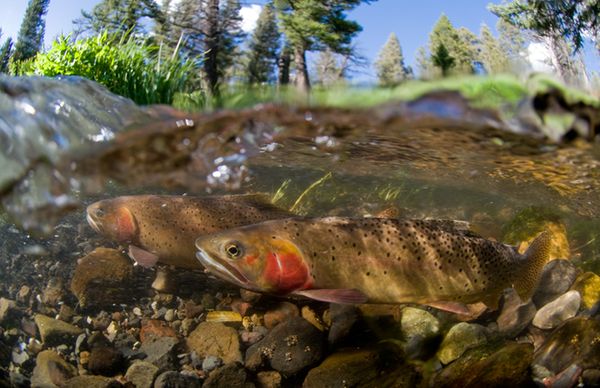By Cathy Newman
For National Geographic News
It’s a case of trout versus trout, and in the face-off between native Yellowstone cutthroats (Oncorhynchus clarkii bouvieri) and the intruders on the scene, lake trout (Salvelinus namaycush), the judgment handed down is a no-brainer. The lake trout must go.
[dropcap]T[/dropcap]he problem, explained Pat Bigelow, a fisheries biologist at Yellowstone National Park, Wyoming, emerged in 1994 when lake trout were discovered in Yellowstone Lake. Why lake trout were

Yellowstone cutthroat trout are declining due to pressure from larger invasive lake trout. Photograph by Jay Fleming.
introduced into the lake is a mystery. Perhaps, biologists speculate, some anonymous angler wanted to diversify the fish population in the lake but didn’t think through the consequences. “It’s an example of bucket biology,” said Todd Koel, supervisory fisheries biologist for the park. (Related pictures: Trout vs. Trout in Yellowstone Lake.)
A Yellowstone cutthroat—coppery in color, back peppered with spots, a blush of pink by the gills—is a thing of beauty. But it is outmatched in size and outlived by the lake trout, which weighs in at over 50 pounds (23 kilograms) and can reach the ripe old age of 20-plus years, about twice the span of cutthroats. More to the point, lake trout eat cutthroats.
Why the fuss? Isn’t variety the spice of trout fishing? Not at all, said Bigelow. The cutthroat fishery provides an estimated 34 million dollars in economic benefit to the area. Lake trout—not as easy to catch—are no substitute for their native cousins. More important, Yellowstone cutthroats, and their genetic well-being, need protecting. Two of fourteen cutthroat species—the Alvord and yellowfin—are already extinct.






